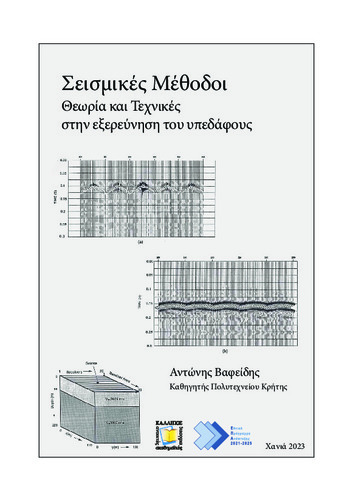| Title Details: | |
|
Exploration Seismology |
|
| Other Titles: |
Theory and Techniques in subsurface exploration |
| Authors: |
Vafidis, Antonis |
| Subject: | NATURAL SCIENCES AND AGRICULTURAL SCIENCES > EARTH SCIENCES > GEOPHYSICS NATURAL SCIENCES AND AGRICULTURAL SCIENCES > EARTH SCIENCES > GEOPHYSICS > SEISMOLOGY AND SEISMIC EXPLORATION NATURAL SCIENCES AND AGRICULTURAL SCIENCES > EARTH SCIENCES > GEOPHYSICS > WELL LOGGING ENGINEERING AND TECHNOLOGY > TECHNOLOGICAL SCIENCES AND ENGINEERING > MINING AND METALLURGICAL TECHNOLOGY AND ENGINEERING > MINING RESEARCH ENGINEERING AND TECHNOLOGY > TECHNOLOGICAL SCIENCES AND ENGINEERING > RURAL AND SURVEYING ENGINEERING > GEOTECHNICAL ENGINEERING |
| Keywords: |
Seismic reflection
Seismic refraction Seismic signal processing Seismic velocity Stacking Deconvolution Migration Wave theory Multichannel analysis of surface waves Geophysical Well Logging |
| Description: | |
| Abstract: |
The book "Seismic Methods: Theory and Techniques in subsurface exploration" introduces the seismic methods developed mainly for the hydrocarbons exploration. Emphasis is given on the presentation of the basic principles of the seismic methods as well as on their applications for mineral resources exploration and geotechnical investigations. The elastic wave propagation theory is presented for plane waves in homogeneous medium. A chapter is devoted to the seismic reflection method and the presentation of relevant case histories.
The seismic reflection method is considered as the most developed geophysical technique providing increased resolution images of the subsurface. The geophysical survey includes three main steps, namely data acquisition, processing and interpretation. This book depicts land and marine seismic reflection data acquisition techniques including equipment description. Seismic data processing involves the application of deconvolution techniques, static and dynamic corrections, velocity analysis, stacking and migration techniques. Apart from velocity analysis based on the seismic reflection data, down hole geophysical well logging techniques for seismic velocity estimation are also presented. A short chapter is devoted to surface wave analysis and its application in geotechnical investigations.
The level of the physics and mathematics is kept within the text for undergraduate engineering and geosciences students. Boxes for further reading supplement the text. Elements of signal theory, necessary for the presentation of certain seismic data processing techniques, are given in a separate chapter.
|
| Linguistic Editors: |
Nika, Eleni |
| Technical Editors: |
Afentakis, Nikos |
| Graphic Editors: |
Vafidis, Antonis |
| Type: |
Undergraduate textbook |
| Creation Date: | 02-03-2023 |
| Item Details: | |
| ISBN |
978-618-5726-45-4 |
| License: |
Attribution - NonCommercial - ShareAlike 4.0 International (CC BY-NC-SA 4.0) |
| DOI | http://dx.doi.org/10.57713/kallipos-172 |
| Handle | http://hdl.handle.net/11419/9131 |
| Bibliographic Reference: | Vafidis, A. (2023). Exploration Seismology [Undergraduate textbook]. Kallipos, Open Academic Editions. https://dx.doi.org/10.57713/kallipos-172 |
| Language: |
Greek |
| Consists of: |
1. Introduction 2. Plane Elastic Waves Propagation 3. Seismic Refraction 4. Seismic Reflection 5. Field Equipment 6. Velocity Analysis- Geophysical Well Logging 7. Seismic Signal Processing 8. Deconvolution 9. Seismic Data Processing 10. Multichannel Analysis of Surface Waves |
| Number of pages |
282 |
| Publication Origin: |
Kallipos, Open Academic Editions |
| You can also view | |
| User comments | |
There are no published comments available! | |

